Citibank 2010 Annual Report Download - page 239
Download and view the complete annual report
Please find page 239 of the 2010 Citibank annual report below. You can navigate through the pages in the report by either clicking on the pages listed below, or by using the keyword search tool below to find specific information within the annual report.-
 1
1 -
 2
2 -
 3
3 -
 4
4 -
 5
5 -
 6
6 -
 7
7 -
 8
8 -
 9
9 -
 10
10 -
 11
11 -
 12
12 -
 13
13 -
 14
14 -
 15
15 -
 16
16 -
 17
17 -
 18
18 -
 19
19 -
 20
20 -
 21
21 -
 22
22 -
 23
23 -
 24
24 -
 25
25 -
 26
26 -
 27
27 -
 28
28 -
 29
29 -
 30
30 -
 31
31 -
 32
32 -
 33
33 -
 34
34 -
 35
35 -
 36
36 -
 37
37 -
 38
38 -
 39
39 -
 40
40 -
 41
41 -
 42
42 -
 43
43 -
 44
44 -
 45
45 -
 46
46 -
 47
47 -
 48
48 -
 49
49 -
 50
50 -
 51
51 -
 52
52 -
 53
53 -
 54
54 -
 55
55 -
 56
56 -
 57
57 -
 58
58 -
 59
59 -
 60
60 -
 61
61 -
 62
62 -
 63
63 -
 64
64 -
 65
65 -
 66
66 -
 67
67 -
 68
68 -
 69
69 -
 70
70 -
 71
71 -
 72
72 -
 73
73 -
 74
74 -
 75
75 -
 76
76 -
 77
77 -
 78
78 -
 79
79 -
 80
80 -
 81
81 -
 82
82 -
 83
83 -
 84
84 -
 85
85 -
 86
86 -
 87
87 -
 88
88 -
 89
89 -
 90
90 -
 91
91 -
 92
92 -
 93
93 -
 94
94 -
 95
95 -
 96
96 -
 97
97 -
 98
98 -
 99
99 -
 100
100 -
 101
101 -
 102
102 -
 103
103 -
 104
104 -
 105
105 -
 106
106 -
 107
107 -
 108
108 -
 109
109 -
 110
110 -
 111
111 -
 112
112 -
 113
113 -
 114
114 -
 115
115 -
 116
116 -
 117
117 -
 118
118 -
 119
119 -
 120
120 -
 121
121 -
 122
122 -
 123
123 -
 124
124 -
 125
125 -
 126
126 -
 127
127 -
 128
128 -
 129
129 -
 130
130 -
 131
131 -
 132
132 -
 133
133 -
 134
134 -
 135
135 -
 136
136 -
 137
137 -
 138
138 -
 139
139 -
 140
140 -
 141
141 -
 142
142 -
 143
143 -
 144
144 -
 145
145 -
 146
146 -
 147
147 -
 148
148 -
 149
149 -
 150
150 -
 151
151 -
 152
152 -
 153
153 -
 154
154 -
 155
155 -
 156
156 -
 157
157 -
 158
158 -
 159
159 -
 160
160 -
 161
161 -
 162
162 -
 163
163 -
 164
164 -
 165
165 -
 166
166 -
 167
167 -
 168
168 -
 169
169 -
 170
170 -
 171
171 -
 172
172 -
 173
173 -
 174
174 -
 175
175 -
 176
176 -
 177
177 -
 178
178 -
 179
179 -
 180
180 -
 181
181 -
 182
182 -
 183
183 -
 184
184 -
 185
185 -
 186
186 -
 187
187 -
 188
188 -
 189
189 -
 190
190 -
 191
191 -
 192
192 -
 193
193 -
 194
194 -
 195
195 -
 196
196 -
 197
197 -
 198
198 -
 199
199 -
 200
200 -
 201
201 -
 202
202 -
 203
203 -
 204
204 -
 205
205 -
 206
206 -
 207
207 -
 208
208 -
 209
209 -
 210
210 -
 211
211 -
 212
212 -
 213
213 -
 214
214 -
 215
215 -
 216
216 -
 217
217 -
 218
218 -
 219
219 -
 220
220 -
 221
221 -
 222
222 -
 223
223 -
 224
224 -
 225
225 -
 226
226 -
 227
227 -
 228
228 -
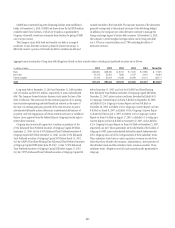 229
229 -
 230
230 -
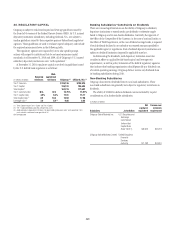 231
231 -
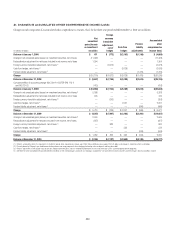 232
232 -
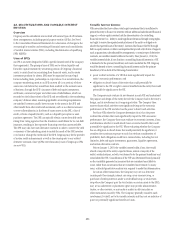 233
233 -
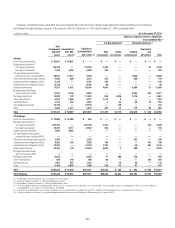 234
234 -
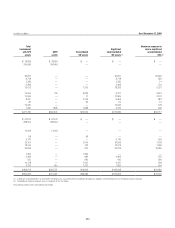 235
235 -
 236
236 -
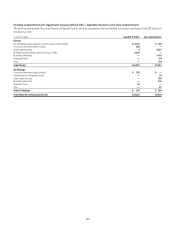 237
237 -
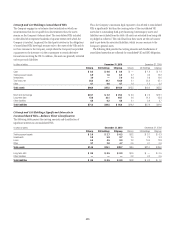 238
238 -
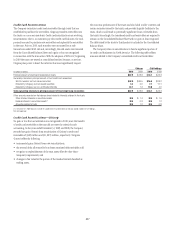 239
239 -
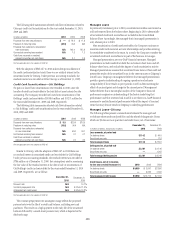 240
240 -
 241
241 -
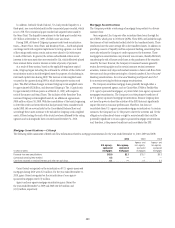 242
242 -
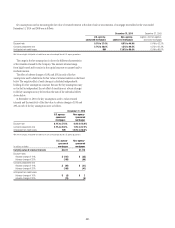 243
243 -
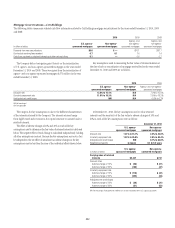 244
244 -
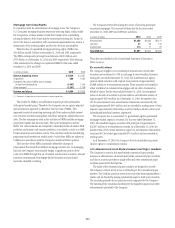 245
245 -
 246
246 -
 247
247 -
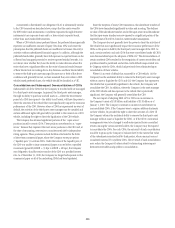 248
248 -
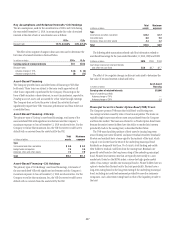 249
249 -
 250
250 -
 251
251 -
 252
252 -
 253
253 -
 254
254 -
 255
255 -
 256
256 -
 257
257 -
 258
258 -
 259
259 -
 260
260 -
 261
261 -
 262
262 -
 263
263 -
 264
264 -
 265
265 -
 266
266 -
 267
267 -
 268
268 -
 269
269 -
 270
270 -
 271
271 -
 272
272 -
 273
273 -
 274
274 -
 275
275 -
 276
276 -
 277
277 -
 278
278 -
 279
279 -
 280
280 -
 281
281 -
 282
282 -
 283
283 -
 284
284 -
 285
285 -
 286
286 -
 287
287 -
 288
288 -
 289
289 -
 290
290 -
 291
291 -
 292
292 -
 293
293 -
 294
294 -
 295
295 -
 296
296 -
 297
297 -
 298
298 -
 299
299 -
 300
300 -
 301
301 -
 302
302 -
 303
303 -
 304
304 -
 305
305 -
 306
306 -
 307
307 -
 308
308 -
 309
309 -
 310
310 -
 311
311 -
 312
312
 |
 |

237
Credit Card Securitizations
The Company securitizes credit card receivables through trusts that are
established to purchase the receivables. Citigroup transfers receivables into
the trusts on a non-recourse basis. Credit card securitizations are revolving
securitizations; that is, as customers pay their credit card balances, the cash
proceeds are used to purchase new receivables and replenish the receivables
in the trust. Prior to 2010, such transfers were accounted for as sale
transactions under SFAS 140 and, accordingly, the sold assets were removed
from the Consolidated Balance Sheet and a gain or loss was recognized
in connection with the transaction. With the adoption of SFAS 167, beginning
in 2010 the trusts are treated as consolidated entities, because, as servicer,
Citigroup has power to direct the activities that most significantly impact
the economic performance of the trusts and also holds a seller’s interest and
certain securities issued by the trusts, and provides liquidity facilities to the
trusts, which could result in potentially significant losses or benefits from
the trusts. Accordingly, the transferred credit card receivables are required to
remain on the Consolidated Balance Sheet with no gain or loss recognized.
The debt issued by the trusts to third parties is included in the Consolidated
Balance Sheet.
The Company relies on securitizations to fund a significant portion of
its credit card businesses in North America. The following table reflects
amounts related to the Company’s securitized credit card receivables:
Citicorp Citi Holdings
In billions of dollars 2010 2009 2010 2009
Principal amount of credit card receivables in trusts $67.5 $78.8 $34.1 $42.3
Ownership interests in principal amount of trust credit card receivables
Sold to investors via trust-issued securities $42.0 $66.5 $16.4 $28.2
Retained by Citigroup as trust-issued securities 3.4 5.0 7.1 10.1
Retained by Citigroup via non-certificated interests 22.1 7.3 10.6 4.0
Total ownership interests in principal amount of trust credit card receivables $67.5 $78.8 $34.1 $42.3
Other amounts recorded on the balance sheet related to interests retained in the trusts
Other retained interests in securitized assets N/A $ 1.4 N/A $ 1.6
Residual interest in securitized assets (1) N/A 0.3 N/A 1.2
Amounts payable to trusts N/A 1.2 N/A 0.8
(1) December 31, 2009 balances include net unbilled interest of $0.3 billion for Citicorp and $0.4 billion for Citi Holdings.
N/A Not Applicable
Credit Card Securitizations—Citicorp
No gain or loss from securitization was recognized in 2010, since the transfer
of credit card receivables to the trust did not meet the criteria for sale
accounting. In the years ended December 31, 2009 and 2008, the Company
recorded net gains (losses) from securitization of Citicorp’s credit card
receivables of $349 million and $(1,007) million, respectively. Net gains
(losses) reflect the following:
incremental gains (losses) from new securitizations;•
the reversal of the allowance for loan losses associated with receivables sold;•
net gains on replenishments of the trust assets offset by other-than-•
temporary impairments; and
changes in fair value for the portion of the residual interest classified as •
trading assets.
